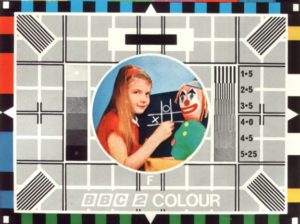Do you trust a digital lock? Do you trust programmatic advertising? Did anybody ever believe anybody would write that sentence?
Sermon Of the Last Sunday (#SOLS) was introduced with on-target delivery: the 2017 Reading challenge and the first Japan retrospective. Then I got the calendar wrong – thought March had an extra Sunday – and now find myself writing March’s installment in April. But that’s a technicality and I’m not letting myself get too concerned with that level of detail. But what to write about?
Although I vowed not to write too much on this site about the technology of digital advertising, it seems that industry news in March is worth mentioning. If I was still writing those ‘Last Week in Digital Advertising‘ round-ups then I’d have plenty of material. What made this month’s headlines big was because the news involved Google. And they always make a good story (and then they’ll index it and let you find it again too).
Google may be known to most people as the search engine and YouTube-owner but it’s also one of the biggest advertising businesses in the UK. Last year eMarketer reported,
Google will net £3.80 billion … in ad revenues— accounting for almost 40% of all digital ad spending in the UK 1
So, you know, huge.
Today, advertising is much more complex than it used to be. The basic premise of advertising hasn’t changed: an advertiser with a product or service to sell or promote wants to get a message in front of a lot of, hopefully, the right people. Somebody with an audience (generically, a publisher) pays the bills by selling some space to the advertiser (be it in print, sound or vision). In Britain, it’s been this way since the 18th Century.2
Digital Changed Advertising
But digital has changed everything else: advertising of all types is easier to buy for many more companies; there are thousands – if not millions – of smaller publishers where people spend time and the so-called ad-tech industry has developed hundreds of new technology ideas that sit between the advertiser and the publisher (so many, that the world they inhabit is known as the Lumascape, after the company who tries to plot them all). This Lumascape uses technology to make the process of buying and selling across so many different places both easier and more efficient by automating as much of the process as possible. Increasingly, this automation means that the advertiser (who is the buyer) relies on a machine to decide where to buy. Publishers, both old and new, connect their advertising business to these automatic buying machines in the hope the advertiser actually spends money with them. It’s a process that’s been termed ‘programmatic advertising’.
The problem for many advertisers and publishers is that the details of ‘programmatic advertising’ are something of a mystery: for the advertiser they can’t be 100% sure where their advertising will show up and for the publisher they can’t be 100% sure who is advertising on their sites.
Technology Trust
Do you have a connected digital lock on your front door? My guess is that for the odd person that reads this, the answer will be no. Technology has not gained sufficient trust. The problem is, in the modern advertising world, the technology struggles to gain trust from all sides of the market but most people still have to use it. Advertising can no-longer stick with the old-fashioned key; it relies on the digital lock.
And that strange metaphor brings us to the first big story in March’s digital advertising news:
The issue is easy to explain: there’s more and more Internet stuff that people are reading and watching and there’s almost no way for a human being at one of the big advertising companies to have vetted everything out there. And, because the machines have taken the job of deciding which advert goes where, we need to trust the machine to do the right thing. And sometimes, they mess-up. And, occasionally, they mess up in a very big and public way like this.
The issue is complex for advertisers: companies need to be seen where their potential customers are but, in an increasingly fragmented media world, that means that they sometimes end-up down the wrong alley shouting that you should buy their stuff.
The issue is complex for publishers: they have lots of content produced around the globe and submitted by both professionals and the rest of us. And they need to earn money from as many advertisers in as many places as possible and that money isn’t a big enough pot to pay somebody to check every word or second of video. As the BBC’s technology correspondent said,
There are two difficult issues for Google here: spotting videos that are illegal and should be removed from YouTube; and determining which are legal but not suitable to carry advertising.3
The issue is incredibly hard to fix: I can’t imagine the world will go back to the Mad Men era where the buyer and seller not only both know each other and eat a lovely lunch together, but also play golf, go and get drunk in a downtown bar and take each other on expensive ‘days out of the office’. One decision the machine never has to make is if it should be a green olive or a twist of lemon peel in the Martini. Those things will all continue as long as the humans are involved but it represents much less of the advertising that is bought and sold today.
Google hasn’t been singled out here but they are the top story for a couple of reasons. First, advertisers found their ads in the wrong places where they knew Google was responsible. This is reasonably important because, in some cases, the middle men of the Lumascape are so intertwined and wrapped up in a programmatic advertising mystery that the advertiser doesn’t always know which technology provider to shout at. And, secondly, as I already noted, Google is big so it impacts a lot of advertisers and a lot of money. Thirdly, Google also makes headlines which means we all notice and people like me get to write 1383 words on the topic. But, as much as the industry might wish Google to take the heat; the issues raised apply to almost everybody involved in making machines buy & sell advertising.
It’s Really A Story About Machines
The advertisers that have taken a stand against Google and other forms of programmatic advertising will come back. Perhaps, their agencies will pay a little more attention to the technology and the controls that are available today. The publishers will do a better job of classifying the content so that it’s a tiny bit easier to spot the places where they should not be running advertising.
But, in the end, it will continue to be about the machines. The automation of traditional roles is increasingly common; the removal of some of the people in a process is not unique to advertising (this is just today’s biggest story). The machines will get trained a little better and become a little smarter in managing all this in the milliseconds they have to make a decision. But in advertising, as in many areas, the machines are here to stay.
Perhaps it’s good news for real people. The machines have a lot to learn and, until they do, we’d all be wise to reconsider if we should be using a digital lock or just going for a drink with the local locksmith.
#SOLS
I didn’t even get to the other big digital advertising story of March. Maybe that’s already material for another Sermon.
Sermon Of the Last Sunday is my attempt to ensure that there is something published on my site every month in 2017. You can read about my attempts to force myself to write or review the full #sols collection through the handy site tag, sols.
Footnotes
1 UK Digital Ad Spend Will Continue Double-Digit Growth in 2016, eMarketer, 28 September 2016
2 History of Advertising in Britain, Wikipedia
3 Google’s crisis of confidence, BBC

 Almost four years ago, on a blistering hot Sunday afternoon in North Hills, Raleigh, North Carolina, I sat listening to a group of passionate technologists outline a vision for ad-serving aimed at digital publishers that would – before the world had got so hung up on big data – show that there’s much more business insight in the ad-server data than just clicks and impressions.
Almost four years ago, on a blistering hot Sunday afternoon in North Hills, Raleigh, North Carolina, I sat listening to a group of passionate technologists outline a vision for ad-serving aimed at digital publishers that would – before the world had got so hung up on big data – show that there’s much more business insight in the ad-server data than just clicks and impressions.